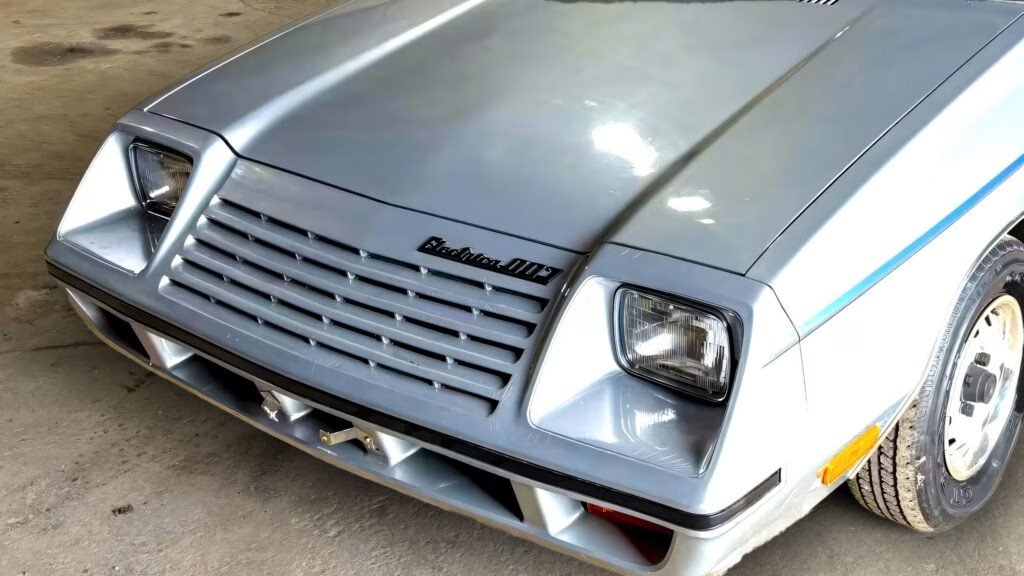What Made Early Electric Car Conversions Like the Jet Industries Dodge Omni So Unique?
If you ever wondered what electric vehicles looked like before Tesla made them cool, you’d be surprised by the ingenuity—and sometimes sheer audacity—of early EV pioneers. Take Jet Industries, for example. This Texas-based company didn’t wait for the big automakers to go green. Instead, they took ordinary gas-powered cars and transformed them into electric oddities, long before lithium-ion batteries or fast charging were even a twinkle in an engineer’s eye.
One of their rarest creations, a 1980 Dodge Omni 024, is a perfect case study. At first glance, it looks like any other hatchback from the era. But under the hood? Gone is the gas engine, replaced by a humble 23-horsepower electric motor. That’s less power than most modern riding lawnmowers, but for the late 70s and early 80s, it was a bold experiment. The real kicker: the trunk was stuffed with roughly 1,000 pounds of 12-volt lead-acid batteries. Not exactly cutting-edge by today’s standards, but back then, it was the only game in town.
How Did These Early EVs Actually Work—and Were They Practical?
Let’s be honest: practicality wasn’t the main selling point. These conversions were more about proving a point than setting speed records. The lead-acid batteries, while reliable for golf carts and forklifts, were heavy and offered limited range. There’s no official data on how far this Dodge Omni could travel on a single charge, but similar conversions from the era typically managed somewhere between 30 and 50 miles—if you drove gently and didn’t mind crawling up hills.
Performance? Let’s just say you wouldn’t be winning any drag races. With only 23 horsepower on tap, acceleration was leisurely at best. But for city driving or short commutes, it was technically possible. The real challenge was the sheer weight of those batteries, which not only ate up trunk space but also put a strain on the car’s suspension and brakes. And forget about road trips—charging infrastructure was non-existent, and recharging those batteries took hours.
Why Did Hobbyists and Small Companies Like Jet Industries Attempt These Conversions?
It’s easy to look back and chuckle at these early EVs, but there’s a certain charm—and a lot of courage—in what Jet Industries and similar outfits attempted. They were driven by a mix of environmental concern, curiosity, and the oil crises of the 1970s. Gas prices were unpredictable, and the idea of a car that ran on electricity, no matter how limited, was tantalizing.
For many hobbyists, the appeal was as much about the challenge as the result. Converting a car to run on batteries and an electric motor required creativity, mechanical skill, and a willingness to accept some trade-offs. These projects were often labors of love, with owners tinkering in their garages, swapping stories and tips in niche magazines or at local car meets.
What’s the Value of a Vintage Electric Conversion Today?
Here’s where things get interesting. While the mainstream collector car market tends to favor pristine muscle cars or rare exotics, there’s a growing niche for oddball EVs. The Jet Industries Dodge Omni 024, for instance, is heading to auction, but don’t expect it to fetch six figures. Its value lies in its rarity and its place in automotive history, not in performance or luxury.
Most experts agree that such vehicles appeal mainly to collectors who appreciate the quirky side of car culture. Given its current condition—missing batteries, possible rust issues, and a drivetrain that’s more conversation starter than daily driver—a sale price in the low thousands is realistic. Still, for the right buyer, owning a piece of EV history is worth far more than its market value.
How Do Early EVs Compare to Modern Electric Cars?
It’s almost unfair to compare a Jet Industries Omni to a modern Tesla or Nissan Leaf. Today’s EVs benefit from decades of technological advances: lightweight lithium-ion batteries, powerful motors, regenerative braking, and sophisticated electronics. The result? Modern electric cars can travel hundreds of miles on a charge, accelerate briskly, and recharge in minutes rather than hours.
But those early conversions paved the way. They proved that electric propulsion was possible, even if the execution was clunky by today’s standards. According to the International Energy Agency, there were over 26 million electric cars on the road worldwide by 2022—a number that would’ve seemed like science fiction to the Jet Industries crew. Their efforts, however modest, helped keep the dream alive during decades when mainstream automakers showed little interest.
Is There a Place for Vintage EVs in Today’s Car Culture?
Absolutely. Vintage EVs like the Jet Industries Omni are more than just curiosities. They’re rolling reminders of a time when innovation meant working with what you had, even if it meant sacrificing speed, range, or comfort. For collectors, they offer a tangible connection to the roots of the electric car movement—a movement that’s now reshaping the entire industry.
If you’re tempted to add one to your garage, just remember: you’ll need a healthy dose of patience, a willingness to hunt down obscure parts, and maybe a tetanus shot or two. But you’ll also own a piece of history that tells a story no modern EV can match.
The big takeaway? Early electric conversions weren’t about perfection—they were about daring to try something new. Start with one bold idea, and you might just spark a revolution.

